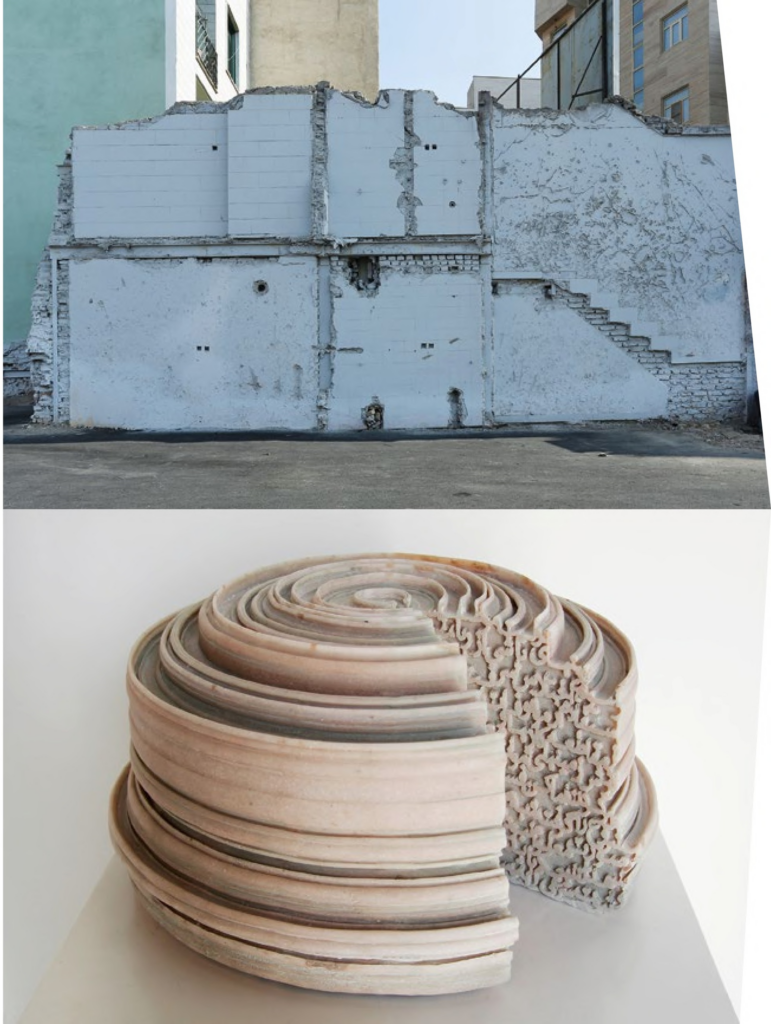NAZGOL ANSARINIA
Born 1979 in Teheran, Iran, where she lives and works
Membranes (parts) 2014, Article 47, Pillars, Article 49, Pillars, Article 45, Pillars 2014-18

Born and raised in Tehran, Nazgol Ansarinia adopts a deconstructive approach, first developed during her graduate studies at the California College of the Arts in the early 2000s, to investigate the systems and networks that structure the urban everyday there, paying particular attention to architecture and language as expressions of power. Ansarinia’s interest stems from the breakneck pace of expansion and gentrification in the city over the past few decades, a process that has left it in a disorienting state of eternal flux.
These cycles of demolition and construction often reveal, for a brief period, a fragment of an interior wall, providing access to a private sphere that is otherwise carefully guarded. Ansarinia’s Membrane (parts) (2014) are sections of a one-to-one replica of one such wall molded out of fragile white papier-mâché. On them we can make out traces of the architecture of everyday life: outlines of walls, floors and a stairway connecting two floors; the familiar staggered arrangement of cement blocks; neat, tiled grids; small depressions corresponding to electrical sockets and switches. Monumentalizing a momentary ruin, Membrane indexes and preserves the lives and memories of those who once inhabited these domestic spaces. These ghostly fragments evoke both skin and shroud, the surface of the city’s ever-changing body, and an attempt to arrest that unrelenting process of transformation, and to mourn what is lost as a result.
Ansarinia’s Pillars (2014) is a series of cast resin sculptures that resemble capitals, sometimes attached to pillars. Each is based on an article from the Iranian Constitution, its mass the result of rotating the text around a central axis, its undulating exterior determined by the contours of the Farsi script. Ansarinia intentionally leaves a gap in the resulting forms so that the text remains visible and legible. While her title acknowledges the foundational role that such statutes—which govern economic matters—play in society, Ansarinia transforms these texts into a type of neoclassical architectural ornament that features prominently in the garish new construction that has overrun Tehran in recent years.
